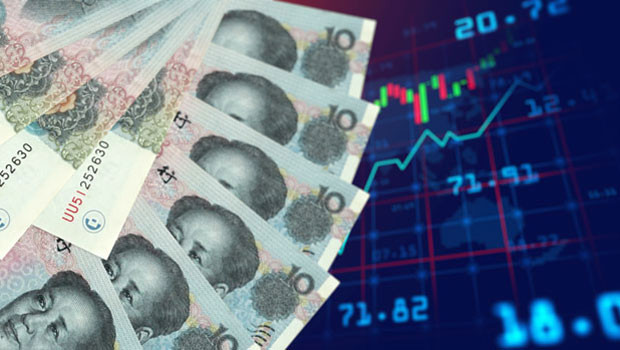
Source: Sharecast
Sentiment was still being shaped by a US federal appeals court ruling late last week that most of president Donald Trump’s global tariffs were illegal, while Trump said India had offered to cut its tariffs on US imports to zero but described the move as overdue.
“Stocks remained relatively stable as traders awaited guidance from Wall Street's reopening after the long weekend, which historically marks the weakest month for US shares,” said Patrick Munnelly, market strategy partner at TickMill.
“Asian market indicators showed minor fluctuations between gains and losses, while equity-index futures in the US and Europe fell slightly.
“Gold prices reached a new peak on Tuesday, as speculators anticipated the Federal Reserve to reduce interest rates this month.”
Regional markets mixed as investors digest latest tariff developments
Japanese stocks advanced, with the Nikkei 225 climbing 0.35% to 42,335.50 and the Topix up 0.61% at 3,081.88.
Isetan Mitsukoshi led gains, rising 5.93%, followed by Kirin Holdings, up 5.38%, and Mitsui Mining and Smelting, which added 4.8%.
“In Japan, 10-year bonds climbed following the highest auction since 2023,” Munnelly noted.
“The yen depreciated by 0.3% against the Dollar, with no new insights into the interest rate outlook from BoJ's Himino's speech.”
In China, the Shanghai Composite fell 0.45% to 3,858.13 and the Shenzhen Component slid 2.14% to 12,553.84.
Losses were steepest in technology and pharmaceuticals, with Espressif Systems Shanghai down 12.38%, Zhejiang ChiMin Pharmaceutical off 10.02% and Shenzhen Kinwong Electronic falling 10%.
Hong Kong’s Hang Seng Index declined 0.47% to 25,496.55, with SMIC down 4.63%, Sunny Optical Technology off 3.81% and China Hongqiao Group sliding 3.27%.
South Korea’s Kospi 100 gained 1.24% to 3,208.20, driven by strength in Hanwha Systems, up 6.46%, Hanwha Ocean, ahead 5.84%, and Samsung Life, which rose 5.49%.
Australia’s S&P/ASX 200 dropped 0.3% to 8,900.60, weighed by declines in DroneShield, down 4.63%, Stanmore Coal, off 4.62%, and Pilbara Minerals, which slipped 4.12%.
Across the Tasman Sea, New Zealand’s S&P/NZX 50 rose 0.48% to 13,133.16, supported by Oceania Healthcare, up 4.76%, Vista Group International, ahead 4%, and Serko, which gained 3.59%.
“In the US, investors are preparing for a jobs report on Friday, which will impact the Federal Reserve's short-term policy decisions,” said Munnelly.
“There is a widespread expectation of a 25 basis-point rate cut during the September meeting.
“Continued criticism of the Fed by president Donald Trump has made investors cautious, particularly with Trump's attempts to dismiss governor Lisa Cook raising concerns over potentially more dovish appointments at the central bank.”
In currencies, the dollar was last up 0.95% on the yen to trade at JPY 148.58, as it gained 0.67% against the Aussie to AUD 1.5364, and advanced 0.82% on the Kiwi to change hands at NZD 1.7086.
Oil prices advanced, with Brent crude futures last up 1.57% on ICE at $69.22 per barrel, and the NYMEX quote for West Texas Intermediate gaining 2.67% to $65.72.
“Oil prices increased as focus turned to the upcoming OPEC+ meeting,” Munnelly said.
Headline inflation eases in Korea, Australia’s current account deficit narrows
In economic news, South Korea’s headline inflation eased to 1.7% year-on-year in August, with core inflation at 1.3%, as falling communication and energy costs offset rising food prices.
A 50% bill reduction by SK Telecom, the country’s largest mobile operator, led to a 13.3% drop in communication costs, cutting overall consumer price inflation by 0.61 percentage points.
Gasoline prices also declined for the fifth consecutive month amid falling global oil prices and extended fuel tax cuts.
However, food inflation accelerated to 4.8% on poor harvests linked to severe weather, with fresh food prices expected to rise further ahead of the Chuseok holiday.
In Australia, the financial regulator imposed a fine of AUD 3.88m (£1.89m) on Societe Generale Securities Australia for failing to prevent suspicious trades in electricity and wheat futures.
The Australian Securities and Investments Commission (ASIC) said two clients placed 33 suspicious orders between May 2023 and February 2024, a period marked by volatility in global energy and grain markets following the Russia-Ukraine war.
Separately, Australia’s current account deficit narrowed to AUD 13.7bn in the April-June quarter, from AUD 14.7bn previously, coming in below economists’ expectations for a AUD16bn shortfall.
Reporting by Josh White for Sharecast.com.